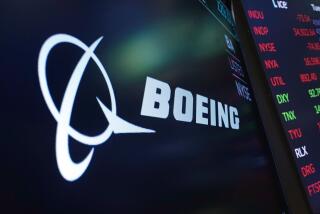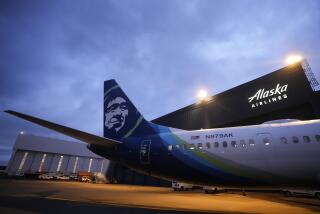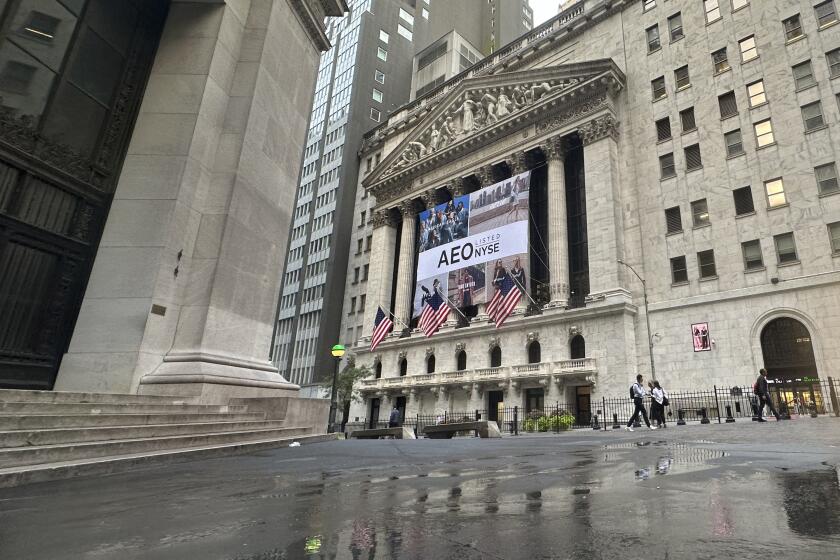Boeing supplier joins probe into 787 fire
One of Boeing Co.’s major suppliers for its 787 Dreamliner passenger jet will help determine if its emergency device played any part in a fire that broke out last week on an empty aircraft parked at London’s Heathrow Airport.
Honeywell International Inc., maker of the plane’s emergency locater transmitter, joined Britain’s Air Accidents Investigation Branch in the probe, along with the U.S. National Transportation Safety Board, the Federal Aviation Administration and Boeing.
The transmitter, installed on commercial airplanes, emits signals to emergency crews in crisis situations. If a plane is involved in a crash, the transmitter will alert search parties about its location.
Honeywell said the transmitter has been certified by the FAA since 2005 and installed on more than 3,000 planes.
“It’s far too premature to speculate on the cause or draw conclusions,” company spokesman Steve Brecken said. “We’ve not seen nor experienced a single reported issue on this product line.”
The transmitter is installed on the top of the 787 near the tail of the plane, where the fire appeared to be burning Friday. The 787 had been sitting at a remote parking stand for more than eight hours at Heathrow when it caught fire. No one was on board the Ethiopian Airlines plane, the airline and an airport spokeswoman said.
Boeing, the NTSB and the FAA would not comment. Britain’s Air Accidents agency was not available for comment. Other major suppliers, such as General Electric Co. and United Technologies Corp., said they had not been asked to participate in the investigation.
The emergency locater transmitter is not known to be a fire risk, said Thomas Anthony, a retired FAA investigations official who now is the director of USC’s aviation safety and security program.
“It can be a problematic device,” he said. “It is frequently accidentally discharged due to hard landings and impact, but I haven’t heard of it being involved in overheating or fire.”
Analysts said the early evidence that the internal fire was not linked to the plane’s lithium-ion batteries was good news. Boeing first hit turbulence with the batteries in January when federal regulators banned all 787 planes from flying after batteries on two planes overheated, with one catching fire.
Boeing later ordered modifications to the jets to increase ventilation and insulation near the batteries, but the company and investigators never determined the root cause of the overheating. The jets were allowed to fly four months later.
“The British authorities have initially indicated that the 787 batteries were not the cause of the fire, which is undoubtedly positive” for Boeing, David Strauss, an aerospace analyst at the financial firm UBS, wrote in a note to investors Monday. “Any connection to the electrical system could be problematic.”
Wall Street, which knocked down Boeing’s stock 4.7% on Friday, responded positively to Monday’s news. Boeing shares rose $3.79, or 3.7%, to $105.66.
Scott Hamilton, an aviation industry consultant and managing director of Leeham Co. in Issaquah, Wash., said he’s cautiously optimistic that the possible emergency locater transmitter issue shouldn’t hurt Boeing.
“But the questions remain about why the ELT failed — if it did — and whether some airplane system contributed to this,” he said. “So overall, too soon to say.”
Hamilton did raise concern about how Boeing will fix the fire damage to the 787.
The 787, a twin-aisle aircraft that can seat 210 to 290 passengers, is the first large commercial jet with more than half its structure made of composite materials — carbon fibers meshed together with epoxy — rather than aluminum sheets.
Whereas other planes can be patched with sections of aluminum, it’s not clear how Boeing can patch up the immense fuselage. The carbon skin is manufactured by mixing fresh layers of fiber and resin, then baked under pressure of a vacuum.
Marc Birtel, a Boeing spokesman, deflected questions about repairs, saying: “Our team is focused on supporting the investigation, and it is premature to publicly discuss repairs to the airplane.”
The Chicago company has hitched its fortunes to the 787, a long-range, wide-body plane considered an engineering marvel. Its carbon-composite exterior and technical designs make it extremely fuel-efficient, an attractive quality for airlines at a time of high fuel prices.
Airlines have ordered 930 Dreamliners, making it one of the most coveted commercial jets. The company has delivered 68 of the jets. Depending on the version ordered, the 787 ranges in price from $206.8 million to $243.6 million.
More to Read
Inside the business of entertainment
The Wide Shot brings you news, analysis and insights on everything from streaming wars to production — and what it all means for the future.
You may occasionally receive promotional content from the Los Angeles Times.










